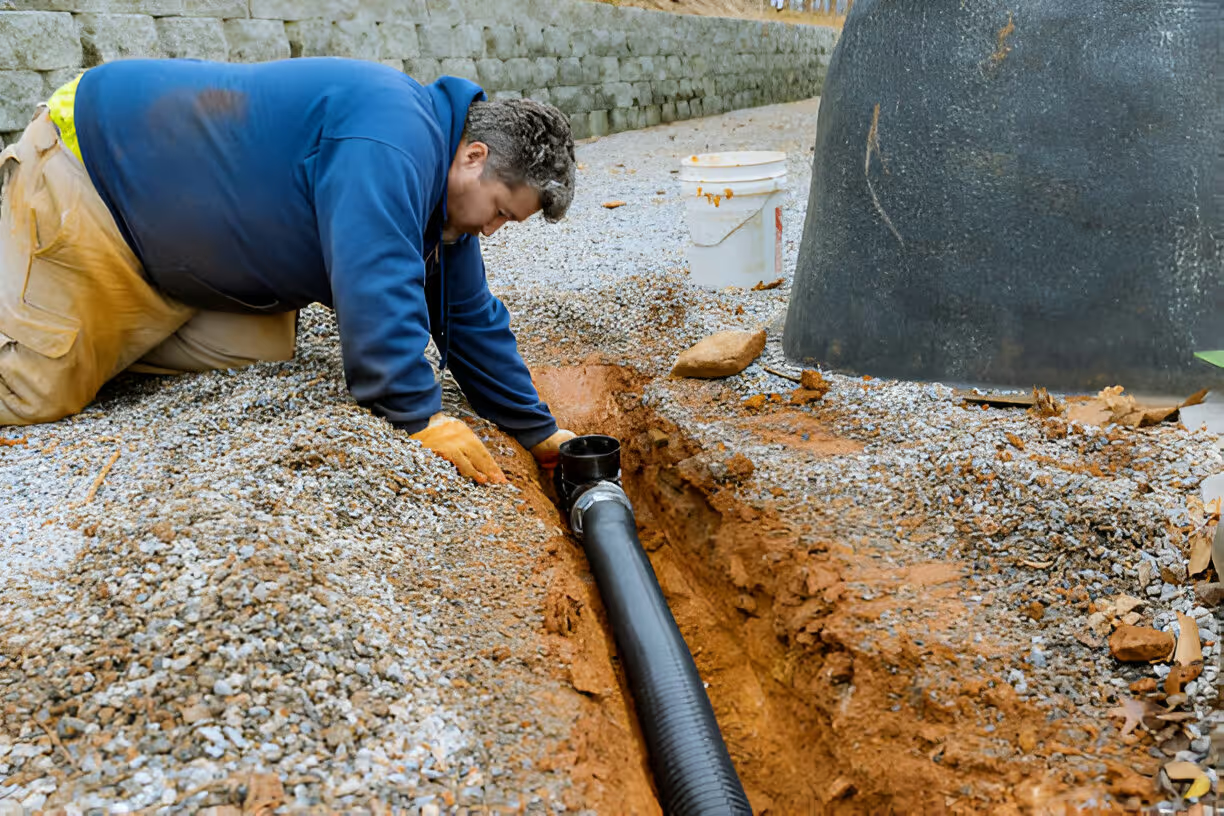Sewer Line Repair in Fountain Hills
A functioning sewer line is a critical, yet unseen, component of your Fountain Hills home. When it fails, the consequences can be disruptive, unsanitary, and stressful. From persistent drain clogs to unpleasant odors, the signs of a sewer line problem demand immediate and professional attention. Addressing these issues promptly not only restores your home’s essential plumbing but also protects your property from significant damage.

Telltale Signs of a Damaged Sewer Line
Sewer line problems often start subtly before escalating into major emergencies. If you notice any of the following signs in your Fountain Hills property, your main sewer line may be compromised.
- Multiple Clogged Drains: A single clogged drain is a common nuisance. However, if your toilets, showers, and sinks are all draining slowly or backing up simultaneously, the blockage is likely in the main sewer line, not an individual fixture.
- Foul Odors: The persistent smell of sewage inside or outside your home is a clear red flag. This indicates that waste is not being carried away properly and may be escaping from a crack or break in the pipe.
- Sewage Backups: The most unpleasant and obvious sign is sewage backing up into your home through floor drains, toilets, or tubs. This is a serious issue that requires immediate professional service.
- Gurgling Sounds: Unusual gurgling noises from your toilets or drains after flushing or running water often signal that air is trapped in the plumbing system due to a blockage or break in the sewer line.
- Lush, Green Patches in Your Yard: If a specific area of your lawn is suddenly greener and more lush than the surrounding grass, it could be receiving extra "fertilizer" and water from a leaking sewer line beneath the surface. You may also notice soggy soil or standing water in these areas.
- Foundation Issues: Chronic leaks from a sewer line can oversaturate and destabilize the soil around your home’s foundation, potentially leading to cracks in the slab or walls over time.
Common Causes of Sewer Line Failure in Arizona
The sewer lines in Fountain Hills face unique environmental challenges. Understanding the cause of the damage is the first step toward a permanent solution.
- Tree Root Intrusion: This is one of the most common culprits. Trees native to Arizona, such as Mesquite and Palo Verde, have aggressive root systems that seek out moisture. They can infiltrate tiny cracks in a sewer line, expanding and causing severe blockages and breaks.
- Aging and Deterioration: Older homes in Fountain Hills may have sewer lines made of clay or cast iron. Over decades, these materials can corrode, crack, and become brittle, leading to collapse.
- Pipe Shifting and Settling: The shifting Arizona soil, combined with ground vibrations and surface pressure, can cause pipes to sink, creating a "belly" where waste collects and causes blockages. In severe cases, pipe joints can separate entirely.
- Severe Clogs: An accumulation of grease, hair, soap scum, and non-flushable items can create severe blockages that place immense pressure on the pipe, sometimes leading to cracks or bursts.
The First Step: Advanced Sewer Camera Inspection
Guesswork has no place in sewer line repair. To accurately diagnose the problem without disruptive and costly excavation, a professional sewer camera inspection is essential. This process involves feeding a high-resolution, waterproof camera into your sewer line through an accessible cleanout.
This allows our technicians to see the inside of your pipes in real-time, pinpointing the exact location and nature of the issue. We can identify tree root intrusion, cracks, collapses, corrosion, or bellied sections of the pipe. This precise diagnostic approach ensures that we recommend the right repair method for your specific situation, saving you time and money.
Your Sewer Line Repair and Replacement Options
Once the problem is diagnosed, we can determine the most effective solution. We specialize in both traditional and modern trenchless repair methods, ensuring you have the best options for your property and budget.
Traditional Sewer Line Repair (Excavation)In some cases, particularly for severely collapsed or inaccessible lines, traditional excavation is necessary. This involves digging a trench to expose the damaged section of the pipe, removing it, and installing a new, durable pipe. While effective, this method is more disruptive to your landscaping, driveway, and patios and typically takes longer to complete.
Trenchless Sewer Repair MethodsFor many situations, trenchless technology offers a superior alternative that preserves your property and provides a long-lasting solution with minimal disruption.
- Pipe Lining (Cured-In-Place Pipe - CIPP): This innovative method essentially creates a new, seamless pipe within the old one. We begin by thoroughly cleaning the existing line to remove roots and debris. Then, a flexible, epoxy-saturated liner is inserted into the pipe and inflated. The epoxy cures, hardening to form a rigid, durable pipe that is resistant to corrosion and root intrusion. This process requires only a small access point, leaving your yard and landscaping virtually untouched.
- Pipe Bursting: This technique is ideal for replacing a severely damaged or collapsed sewer line without major digging. A new, high-density polyethylene pipe is pulled through the old line using a powerful hydraulic system. As the new pipe is pulled through, a specialized "bursting head" shatters the old, damaged pipe outward into the surrounding soil. This simultaneously replaces the old line with a brand-new one, often allowing for an increase in pipe diameter to improve flow capacity.
Choosing between traditional and trenchless methods depends on the specific diagnosis from the camera inspection. Trenchless repairs are often preferred for their speed, minimal property damage, and the creation of a seamless, joint-free pipe that prevents future root intrusion.






